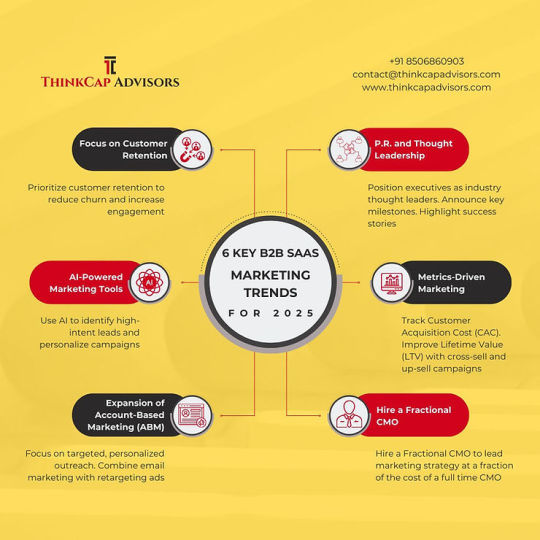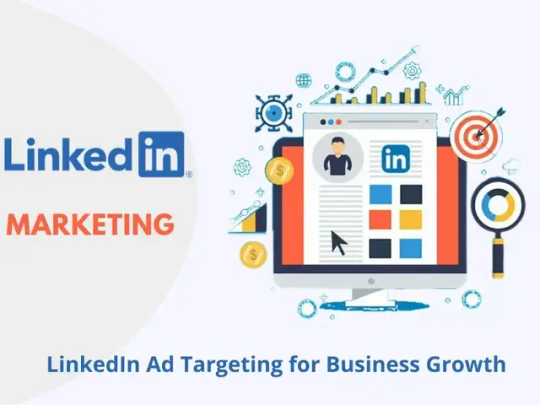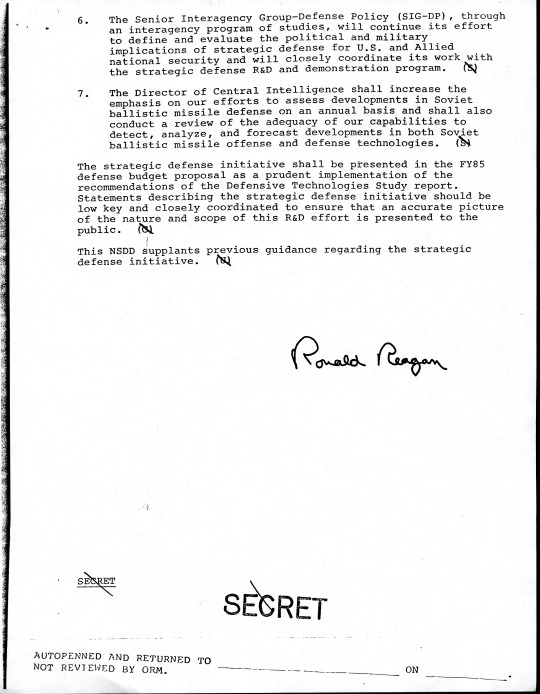#ABM Strategy
Explore tagged Tumblr posts
Text
Driving Strategic Impact: Clarisse Djomkam on ABM, Intent Signals, and Cross-Functional GTM
In today’s hyper-competitive B2B marketing landscape, driving measurable impact requires more than just traditional tactics—it demands precision, alignment, and data-driven strategies. Clarisse Djomkam, a seasoned expert in ABM strategy and intent data, shares invaluable insights on how businesses can leverage these tools to fuel growth.
From harnessing intent signals to fostering seamless sales alignment, her approach underscores the power of a unified go-to-market (GTM) motion. In this deep dive, we explore her key perspectives on transforming B2B marketing into a revenue-driving engine.
Get full insights@ https://itechseries.com/interviews/abm-intent-strategy/
The Evolution of ABM: From Buzzword to Business Imperative
Account-Based Marketing (ABM) has evolved from a niche tactic to a cornerstone of modern B2B marketing. No longer just about targeting high-value accounts, today’s ABM integrates predictive analytics, personalized engagement, and cross-functional collaboration.
Clarisse emphasizes that successful ABM strategy isn’t just about marketing—it’s about aligning sales, customer success, and even product teams around a shared vision. By treating target accounts as markets of one, businesses can drive deeper engagement and accelerate pipeline velocity.

Decoding Intent Data: The Secret Weapon for Precision Targeting
Intent data has emerged as a game-changer, allowing marketers to identify in-market accounts before competitors even notice. Clarisse highlights how monitoring intent signals—such as content downloads, website visits, and search behavior—can uncover hidden demand.
However, she cautions that not all intent data is created equal. The key lies in integrating first-party and third-party signals while ensuring data accuracy. When leveraged correctly, intent data enables hyper-personalized outreach, reducing wasted efforts and maximizing conversion rates.
Bridging the Gap: The Critical Role of Sales Alignment
One of the biggest challenges in B2B marketing is the disconnect between marketing and sales teams. Clarisse stresses that sales alignment isn’t just about shared goals—it’s about real-time collaboration. When marketing hands off an account with rich intent signals, sales teams must act swiftly and strategically.
She advocates for regular syncs, shared KPIs, and even co-created content to ensure messaging consistency. By breaking down silos, companies can create a seamless buyer journey that drives higher win rates and shorter sales cycles.
Orchestrating a Cross-Functional GTM Strategy
A successful go-to-market (GTM) motion requires more than just marketing and sales—it demands cross-functional synergy. Clarisse points out that product, customer success, and even finance teams play pivotal roles in shaping ABM success.
For instance, product teams can provide insights into feature adoption trends, while customer success can identify upsell opportunities within existing accounts. By embedding ABM strategy across departments, businesses can create a cohesive, customer-centric approach that fuels sustainable growth.
Explore the latest marketing and tech insights@ https://itechseries.com/gtm-library/
Personalization at Scale: The ABM Content Playbook
In the realm of B2B marketing, generic content no longer cuts it. Clarisse underscores the importance of hyper-personalized messaging tailored to each account’s pain points and intent signals. Dynamic content, targeted ads, and customized sales plays are essential tools in the modern marketer’s arsenal.
Yet, she warns against over-automation. While technology enables scaling personalization, human insight remains irreplaceable. The best ABM strategy blends AI-driven insights with authentic, relationship-driven engagement.
Measuring What Matters: ABM Metrics That Move the Needle
Many marketers struggle with proving ABM’s ROI. Clarisse advises moving beyond vanity metrics like clicks and impressions, focusing instead on pipeline influence, deal velocity, and account engagement depth.
She also highlights the importance of closed-loop reporting, ensuring that every intent signal and marketing touchpoint is tracked through to revenue. By aligning metrics with business outcomes, teams can refine their ABM strategy for maximum impact.
The Future of ABM: AI, Predictive Analytics, and Beyond
As AI and machine learning advance, B2B marketing is poised for another transformation. Clarisse predicts that predictive analytics will play an even bigger role in identifying high-potential accounts before they show explicit intent signals.
Additionally, she envisions tighter integration between ABM platforms and CRM systems, enabling real-time adjustments to campaigns. The future of ABM strategy lies in agility—anticipating buyer needs and adapting strategies on the fly.
Key Takeaways: Turning Insights into Action
Clarisse Djomkam’s insights offer a roadmap for marketers looking to elevate their ABM strategy and sales alignment. From leveraging intent data to fostering cross-functional collaboration, the path to success lies in precision and teamwork.
For businesses ready to drive strategic impact, the message is clear: ABM isn’t just a tactic—it’s a mindset. By embracing data, personalization, and alignment, companies can unlock unprecedented growth in today’s competitive landscape.
Final Thoughts
The intersection of ABM strategy, intent data, and cross-functional GTM represents the future of B2B marketing. As Clarisse Djomkam’s expertise demonstrates, the brands that thrive will be those that harness these tools with agility and insight.
#ABM Strategy#Intent Data#B2B Marketing#Marketing Leadership#Sales Alignment#Go-To-Market#Revenue Marketing
0 notes
Text
Mastering B2B Event Marketing: A Guide to Boosting Brand Visibility and Driving Sales
Event marketing is a powerful strategy that allows businesses to engage with their audience, increase brand visibility, and generate sales. In today's fast-paced market, live events such as trade shows, conferences, and product launches play a crucial role in establishing connections and driving leads. This article explores the essential components of B2B event marketing, covering strategy development, pre-event promotion, engagement during the event, and effective follow-up to ensure high returns on investment.
What is B2B Event Marketing? B2B event marketing involves organizing in-person, virtual, or hybrid events designed to connect businesses with their target audience. These events—ranging from trade shows and webinars to product launches and workshops—serve as key touchpoints for promoting brands and gathering valuable feedback from prospects. For many organizations, events are a significant part of their marketing budget and offer an excellent opportunity for lead generation. B2B events provide businesses a platform to build brand recognition, foster relationships, and position themselves as industry leaders.
Benefits of B2B Event Marketing B2B event marketing offers multiple advantages, including increased brand exposure and networking opportunities. By showcasing products at events, businesses can directly engage with their target audience and demonstrate their value, increasing the likelihood of converting leads into sales. Virtual and hybrid events further extend reach, allowing businesses to connect with global audiences. Events also provide a unique chance to gather insights about customer needs and competitor activity, helping companies refine their offerings and maintain a competitive edge.
Types of B2B Events There are various types of events businesses can leverage to engage with their audience: Trade Shows – These exhibitions allow businesses to showcase products and network with industry professionals. Conferences – Large-scale events featuring workshops and keynote sessions help establish authority in a given industry. Roadshows – Events held across different locations to create buzz and attract media attention. Networking Events – Intimate gatherings designed to build connections within a specific industry. Product Launches – Exclusive events that introduce new products to key clients and media. Workshops and Seminars – Educational events that provide value through hands-on learning experiences.
Developing an Event Marketing Strategy A successful event marketing strategy involves several stages, from pre-event promotion to post-event follow-up. It starts with generating excitement before the event, followed by an engaging registration process and leveraging multiple marketing channels to maximize visibility. During the event, it’s important to maintain strong engagement with attendees, collect feedback, and ensure smooth execution. Post-event follow-up and analysis of key metrics such as attendance rates, social media engagement, and lead generation help businesses assess the event's effectiveness and improve future strategies.
By integrating a comprehensive event marketing strategy, businesses can build lasting relationships, foster brand loyalty, and generate high-quality leads—each of which drives business growth. Learn more about strategic approaches to creating meaningful audience connections, enhancing brand building, and generating leads through event marketing.
Join us for more insights on B2B marketing, lead generation, ABM, content syndication, demand generation, field marketing, and more from top-tier industry leaders and experts defining B2B success.

0 notes
Text
youtube
#account based marketing examples#abm example#abm strategy#abm makreting#examples account based marketing#Youtube
0 notes
Text
0 notes
Text
Want to accelerate your B2B success? This comprehensive guide to Account-Based Marketing (ABM) and Account-Based Experience (ABX) reveals how to target high-value accounts, personalize customer interactions, and align sales and marketing for maximum impact. Learn proven strategies, real-world examples, and expert insights to drive revenue, enhance engagement, and build long-term relationships with your ideal customers. Whether you're refining your approach or starting from scratch, this guide provides everything you need to master ABM and ABX in today’s competitive B2B landscape.
Click here for complete blog.
#Mastering ABM & ABX Strategy#Account-Based Marketing (ABM)#Account-Based Experience (ABX)#growth marketing agency for healthcare#growth marketing agency for automotive#growth marketing agency for dealers#growth marketing agency for SaaS#growth marketing agency near me#integrations for healthcare#integrations for automotive#integrations for car dealers
0 notes
Text
6 Must-Know B2B SaaS Marketing Trends for 2025

As the B2B SaaS landscape evolves, companies face both challenges and opportunities in achieving sustainable growth. The rise of customer expectations, stiff competition, and a highly saturated & expensive digital advertising ecosystem necessitate a rethinking of marketing strategies. In the following article, we have articulated key marketing trends shaping the B2B SaaS industry in 2025.
Focus On Customer Retention
Customer retention is critical to driving revenue and profitability in SaaS. To minimize churn and enhance product engagement, marketing teams must develop targeted retention campaigns. One effective approach is implementing loyalty programs, which can take the form of:
Priority Support Based on Product Usage: Offering tiered support, where high-usage customers receive priority service. This not only enhances their experience but also reinforces their value to the company.
Discounts on Purchase of Additional Modules: Offering attractive discounts on add-on modules and complimentary products. This strategy increases revenue while deepening customer engagement.
Recognition at Customer Events: Highlighting loyal customers at user conferences or webinars. Recognized customers often become brand advocates, sharing their positive experiences with others.
Early Access to Product Updates and Upgrades: Giving long-term customers a first look at new features or products. This exclusive access makes customers feel valued and fosters engagement with the platform.
2. AI-Powered Marketing Tools and Automation
Artificial Intelligence (AI) is revolutionizing B2B SaaS marketing by streamlining processes and enhancing personalization. Key applications of AI in marketing can include:
Building Prospect Data: AI-powered tools like Apollo have transformed the way SaaS companies build prospect data. By analyzing buyer intent, these tools can identify prospects with high potential, and segment them effectively. Marketing teams can target these segments through tailored campaigns, streamlining efforts, and maximizing impact.
Crafting Compelling Messaging: AI-powered platforms can analyze audience preferences and behaviours to generate highly personalized and persuasive email content, increasing engagement and response rates.
Creating Pitch Videos and Demo Scripts: AI enables marketing teams to produce professional-quality pitch videos and scripts for webinars quickly, significantly reducing the cost of production and time to launch these marketing assets.
3. Expansion of Account-Based Marketing (ABM)
In 2025, Account-Based Marketing (ABM) should become a primary focus for B2B SaaS companies aiming to deliver highly personalized outreach. As digital ads and social media channels become increasingly expensive and saturated, ABM offers a more targeted and cost-effective approach. ABM enables marketing teams to tailor their messaging to specific industries, use cases, and target audiences ensuring higher engagement. ABM approach can include:
Combining Email Marketing with Re-Targeting Ads: By integrating personalized email campaigns with re-targeting ads, SaaS companies can keep their brand top-of-mind for key accounts across multiple touch-points.
Innovative Direct Mail Campaigns: Sending carefully curated snail mail letters to high-value accounts can add a personal touch, breaking through the digital clutter and creating a lasting impression.
ABM’s ability to focus resources on the most valuable accounts ensures effective outreach. With proven potential to deliver strong ROI, ABM is a must-adopt strategy for SaaS companies in 2025

4. Focus on P.R. and Thought Leadership
Public Relations (P.R.) is re-emerging as a vital marketing channel for B2B SaaS companies. A well-crafted P.R. strategy can amplify brand visibility and position key executives as thought leaders in the industry.
Positioning Key Executives: P.R. efforts can include publishing articles, securing interviews, and leveraging byline opportunities to showcase executive expertise and establish credibility.
Announcing Major Milestones: P.R. can be the vehicle for communicating product launches, strategic alliances, and significant customer wins, ensuring these milestones reach the right audience.
Driving Brand Advocacy: P.R. firms can identify opportunities for customers to participate in stories and events, creating a platform for advocacy. These engagements help build trust and highlight real-world success stories.
As a marketing consulting firm specializing in B2B SaaS, we believe that by leveraging public relations effectively, SaaS companies can create a strong narrative, enhance brand reputation, and foster deeper connections with their target market.
5. Metrics-Driven Marketing
As B2B SaaS companies continue to grow their customer base, it is important to track customer acquisition costs. Companies must:
Map Customer Acquisition Cost (CAC): Mapping CAC to specific marketing channels helps identify which channels deliver the best ROI. By understanding channel performance, companies can prioritize budget allocation to the most effective channels.
Calculating Lifetime Value (LTV): By analyzing customer data, including industry type, usage patterns, and purchase behaviour over time, SaaS companies can accurately determine the lifetime value (LTV) of their customers. This analysis enables businesses to segment new customers based on similar profiles and craft targeted cross-sell and up-sell programs to improve revenue per customer.
6. Hire a Fractional CMO
A fractional CMO can be a transformative asset for B2B SaaS companies. By offering strategic leadership, mentoring in-house teams, and applying their cross-industry expertise, Fractional CMOs drive exceptional outcomes. Leveraging an extensive network of marketing service providers and agencies, they can deliver comprehensive solutions tailored to business needs—all at a fraction of the cost of hiring a full-time CMO.
Conclusion
As a marketing consulting services firm specializing in B2B SaaS, we believe that in 2025, companies must embrace an omni-channel marketing strategy that seamlessly integrates offline and online channels. Additionally, businesses need to move beyond the conventional notion that customer retention is solely the responsibility of the customer success team. Marketing must take an active role in retention by launching targeted campaigns that drive customer advocacy and enhance lifetime value (LTV).
#marketing consulting services#fractional cmo services#marketing consulting firm#P.R. strategy#Account-Based Marketing (ABM)
0 notes
Text
Maximizing Your Pipeline with High-Quality Leads (HQL)

Maximizing Your Pipeline with High-Quality Leads (HQL)
In today's competitive B2B market, businesses understand that generating leads is only half the battle. The true challenge lies in attracting high-quality leads (HQL)—prospects who are most likely to convert into paying customers. These leads are the lifeblood of effective marketing strategies, driving higher conversion rates, shorter sales cycles, and improved ROI.
This blog will explore what high-quality leads are, why they matter, and how to consistently attract and convert them using advanced strategies like those offered by B2BinDemand.
What Are High-Quality Leads (HQL)?
High-quality leads (HQL) are prospects who show a genuine interest in your products or services and align closely with your ideal customer profile (ICP). Unlike low-quality leads, who may only engage with your content or services out of curiosity, HQLs demonstrate purchasing intent and are typically further along in their buyer journey.
Identifying HQLs requires looking at factors like:
Demographic fit: Are they within the target industry, job role, or company size?
Behavioral indicators: Have they engaged with high-value content like case studies or pricing pages?
Buying intent: Have they interacted multiple times, indicating real interest in your solutions?
With HQL, your sales and marketing efforts are focused on prospects that are most likely to convert, saving time and resources.
The Importance of High-Quality Leads for B2B Growth
Focusing on high-quality leads can make a significant difference in the success of your B2B marketing efforts. Here are some of the key benefits of prioritizing HQL:
1. Higher Conversion Rates
HQLs are closer to making a purchasing decision, meaning they are more likely to convert when nurtured correctly. These leads are already informed about your services and solutions, which makes your sales team's job easier.
2. Shorter Sales Cycles
Since HQLs are further along the buyer’s journey, they typically require less time and fewer touchpoints to close. This reduces the overall sales cycle, allowing your team to close more deals in a shorter period.
3. Cost-Efficient Marketing
By focusing your marketing efforts on high-quality leads, you reduce wasted spend on low-quality prospects that may never convert. This means higher efficiency and a better return on investment (ROI) for your marketing dollars.
4. Better Customer Retention
High-quality leads are not only more likely to convert but also more likely to become loyal customers. These leads are a better fit for your solutions and often have long-term value.
How to Generate High-Quality Leads
Now that we understand the importance of HQLs, the next step is figuring out how to consistently generate them. Below are some effective strategies to help attract high-quality leads for your business:
1. Account-Based Marketing (ABM)
ABM allows you to tailor your marketing and sales efforts toward specific high-value accounts. This method aligns perfectly with the goal of generating HQL because it ensures you're focusing on prospects that are most likely to convert. Companies like B2BinDemand specialize in ABM strategies to deliver high-quality leads that drive revenue.
2. Content Syndication
Content syndication is another powerful strategy for generating HQLs. By distributing your valuable content—such as whitepapers, webinars, and case studies—across third-party networks, you can attract prospects that are actively seeking solutions like yours. B2BinDemand offers advanced content syndication services to help B2B companies expand their reach and capture high-quality leads.
3. Lead Scoring and Qualification
To prioritize high-quality leads, it’s crucial to implement a solid lead scoring system. This system assigns scores to prospects based on their behavior, engagement with your content, and fit with your ICP. By automating this process with tools like CRM integration, you can ensure your team is focusing on the most promising leads.
4. Personalized Outreach
High-quality leads expect personalized communication tailored to their unique needs. Using marketing automation and data enrichment tools, you can personalize every interaction, making your outreach more relevant and compelling.
5. Intent Data Utilization
Intent data helps identify leads who are actively researching solutions in your industry. By leveraging this data, you can target prospects who are showing buying intent, ensuring you're engaging with those most likely to convert.
How B2BinDemand Can Help You Capture High-Quality Leads
At B2BinDemand, we specialize in helping businesses generate and convert high-quality leads through advanced B2B marketing strategies. Whether you're looking to implement ABM, improve your lead scoring, or distribute content through syndication, our services are designed to deliver measurable results.
Our offerings include: Account-Based Marketing (ABM) solutions to target high-value prospects.
Content syndication services to expand your reach to the right audiences.
Lead nurturing programs to turn HQLs into loyal customers.
Data enrichment to provide deeper insights into your target accounts.
If you're ready to start capturing more high-quality leads, visit B2BinDemand today to learn how we can help!
Conclusion High-quality leads are the foundation of successful B2B marketing efforts. By focusing on the right strategies—like ABM, content syndication, and personalized outreach—you can ensure your business consistently attracts and converts the best prospects. Ready to take your lead generation to the next level? B2BinDemand is here to help you unlock the power of high-quality leads.
#b2b marketing#account based marketing#abm strategies#highqualityleads#HQL#content syndication#b2bindemand#leadgeneration
1 note
·
View note
Text
0 notes
Text
0 notes
Text
Driving Strategic Impact: Clarisse Djomkam on ABM, Intent Signals, and Cross-Functional GTM
In today’s hyper-competitive B2B marketing landscape, driving measurable impact requires more than just traditional tactics—it demands precision, alignment, and data-driven strategies. Clarisse Djomkam, a seasoned expert in ABM strategy and intent data, shares invaluable insights on how businesses can leverage these tools to fuel growth. From harnessing intent signals to fostering seamless sales…
#ABM Strategy#B2B Marketing#Go-To-Market#Intent Data#Marketing Leadership#Revenue Marketing#Sales Alignment
0 notes
Text
Ever wondered how tech giants consistently succeed with their account-based marketing (ABM) strategies? In this Blog, we explore real-world examples of account based marketing examples from industry leaders like DocuSign, GumGum, LiveRamp, Dialpad, and Terminus. Discover how these companies use personalized, data-driven tactics to target high-value accounts and drive impressive results. From LiveRamp $50M revenue boost to GumGum’s creative comic book campaign for T-Mobile’s CEO, these case studies highlight the power of ABM in today’s B2B landscape. Learn about the strategies behind their success, including multi-channel outreach, deep personalization, and the crucial alignment between sales and marketing teams.
#abm strategies#examples of account based marketing#account based marketing#b2b lead generation companies in us#b2b lead generation
0 notes
Text
0 notes
Text
https://hubpages.com/business/the-role-of-email-marketing-in-lead-generation?done
#b2bmarketing#b2b lead generation#b2b services#leadgeneration#abm#account based marketing#Krill technologies#content syndication#brand#strategy#marketing stratergies
1 note
·
View note
Text
The Ultimate Guide to LinkedIn Ad Targeting for Business Growth
LinkedIn Marketing Solutions have emerged as a powerful and efficient way to reach your target audience in the ever-changing world of digital marketing. Businesses can now connect with the right professionals, decision-makers, and potential clients like never before thanks to its highly specific ad targeting capabilities. This article delves into the most recent trends in LinkedIn Marketing…

View On WordPress
#ABM#ad targeting#competitive advantage#digital marketing#LinkedIn#LinkedIn Businesses#LinkedIn Marketing#LinkedIn Marketing Solutions#LinkedIn Marketing Solutions Ad Targeting#lookalike audience#Marketing#marketing strategy
0 notes
Text



NSDD 119 Strategic Defense Initiative
Collection RR-NSC: Numbered National Security Policy PapersSeries: National Security Decision Directives (NSDDs)
NSDD 119 (handwritten)
SECRET (crossed out)
THE WHITE HOUSE
WASHINGTON
SYSTEM II
91482
C.F.
1855545.
N00018
SECRET (crossed out)
NATIONAL SECURITY DECISION
DIRECTIVE NUMBER
STRATEGIC DEFENSE INITIATIVE (U) (crossed out)
The current strategy of nuclear deterrence based upon the threat of retaliation has been successful to date; but it is subject to a number of destabilizing factors in the next generation. The U.S. has actively sought to strengthen the stability and credibility of deterrence and reduce the threat of nuclear war through modernization of its strategic forces and by making significant arms reduction proposals. The Soviet Union's unwillingness thus far to consider true arms reductions, and its massive increases in strategic offensive forces have necessitated continued U.S. actions to preserve our deterrent capabilities. NSDDs 12, 13, and 91 establish Administration policy on strategic forces modernization and nuclear weapons employment and outline our continued adherence to the concept of nuclear deterrence as the means for protecting the security of the United States and our allies. (S) (crossed out)
However, given the uncertain long-term future of offensive deterrence, I believe that an effort must also be made to identify alternative means of deterring nuclear war and protecting our national security interests. In particular, the U.S. should investigate the feasibility of eventually shifting toward reliance upon a defensive concept. Future deterrence should, if possible, be underwritten by a capability to defeat a hostile attack. (S) (crossed out)
New technologies appear to offer the possibility of helping eventually eliminate the most destabilizing threat to the U.S. and its allies, ballistic missile attack. The technology and policy studies undertaken in response to NSSD 6-83 have confirmed that a defense against ballistic missile attack might eventually be developed and could play a critical role in enhancing deterrence. The Defensive Technologies Study described a technology program of R&D and demonstration which might eventually lead to a decision to proceed with development of a ballistic missile defense system. (S) (crossed out) There is also growing concern over a potential Soviet breakout from ABM Treaty. Evidence of Soviet efforts to develop a ballistic missile defense capability makes it incumbent upon the U.S. to do its utmost to acquire its own strategic defense
[full transcription at link]
22 notes
·
View notes
Text
B2B Account-Based Marketing (ABM) vs. Traditional Marketing: Key Differences and Best Practices

Introduction
The evolution of marketing has given rise to a new contender in the B2B space: Account-Based Marketing (ABM). In contrast to traditional marketing strategies that focus on broad reach, ABM takes a laser-targeted approach to reach specific high-value accounts. So, which approach is right for your business? This article compares the key differences between B2B Account-Based Marketing and traditional marketing to help you choose the best strategy for your business.
What is Account-Based Marketing (ABM)?
Account-based marketing is a strategic B2B approach where businesses target specific key accounts with personalized campaigns, treating each account as a market of its own. ABM focuses on quality over quantity, aiming for higher conversion rates from fewer, high-value targets.
Personalization at Scale: ABM tailors messaging and campaigns to each specific account, often relying on data insights to deliver personalized content.
Focused Resources: Marketing and sales teams work together to concentrate on a few targeted accounts rather than casting a wide net.
Better Alignment Between Marketing and Sales: ABM often involves closer collaboration between marketing and sales departments, creating a unified effort in targeting and nurturing leads.
What is Traditional B2B Marketing?
Traditional B2B marketing aims to generate as many leads as possible by appealing to a broad audience. Campaigns are typically designed to attract leads through general messaging and wider distribution channels like email campaigns, ads, and content marketing.
Mass Outreach: Traditional marketing focuses on a larger pool of potential customers, generating leads through broad-based marketing strategies.
Brand Awareness: A primary goal is to increase brand visibility in the market, reaching many potential customers.
Sales Funnel Approach: Leads are gathered in the top funnel and gradually nurtured until they convert into customers.
Key Differences Between ABM and Traditional B2B Marketing
Target Audience
ABM: Highly targeted, focusing on specific high-value accounts or even individual decision-makers within those accounts.
Traditional Marketing: Broadly targets a wide array of prospects within a larger market.
Content and Messaging
ABM: Personalized content designed to address the specific pain points, needs, and interests of the targeted accounts.
Traditional Marketing: More generalized messaging intended to appeal to a broader audience.
Sales and Marketing Alignment
ABM: Close collaboration between marketing and sales, often working together to identify and target specific accounts.
Traditional Marketing: Marketing often works independently from sales, focusing on lead generation while sales teams handle closing.
Success Metrics
ABM: Success is measured by engagement, account conversions, and revenue from targeted accounts.
Traditional Marketing: Metrics often focus on the volume of leads, impressions, and overall brand reach.
Tools and Technologies
ABM: Often relies on advanced marketing automation tools, CRM integrations, and account-specific tracking to deliver personalized experiences.
Traditional Marketing: Typically uses broader tools like mass email marketing platforms, social media scheduling tools, and analytics platforms that track wide-ranging data.
Return on Investment (ROI)
ABM: Offers a higher ROI due to its focus on high-value accounts that are more likely to convert.
Traditional Marketing: ROI can be lower as the focus is on volume rather than quality, which may result in a larger number of unqualified leads.
Pros and Cons of ABM
Pros: High personalization, higher conversion rates, better alignment between sales and marketing, more targeted resource allocation.
Cons: Time and resource-intensive, requires strong collaboration between teams, fewer leads (but higher quality).
Pros and Cons of Traditional Marketing
Pros: Wider reach, easier to scale, generates large volumes of leads, effective for brand awareness.
Cons: Lower personalization, potentially lower lead quality, misalignment between sales and marketing teams.
Which Approach is Right for You?
The choice between ABM and traditional marketing largely depends on your business goals, target audience, and resources. If your business targets a niche market with specific, high-value accounts, ABM may provide a better ROI and stronger customer relationships. On the other hand, if you're looking to grow brand awareness and reach a broad audience, traditional marketing might be more effective.
For some businesses, a hybrid approach may be the best solution, combining the personalized touch of ABM with the broad reach of traditional marketing.
Conclusion
Both ABM and traditional marketing have their strengths and weaknesses. Understanding the core differences can help you align your marketing strategy with your business objectives. Whether you choose ABM for its precision or traditional marketing for its scalability, the key is to adapt and evolve with the changing B2B landscape.
#B2B Account-Based Marketing#ABM vs Traditional Marketing#ABM strategies#•#Traditional B2B marketing#B2B lead generation#Personalized marketing#Targeted marketing campaigns#ABM benefits#ABM best practices#Traditional marketing tactics
1 note
·
View note